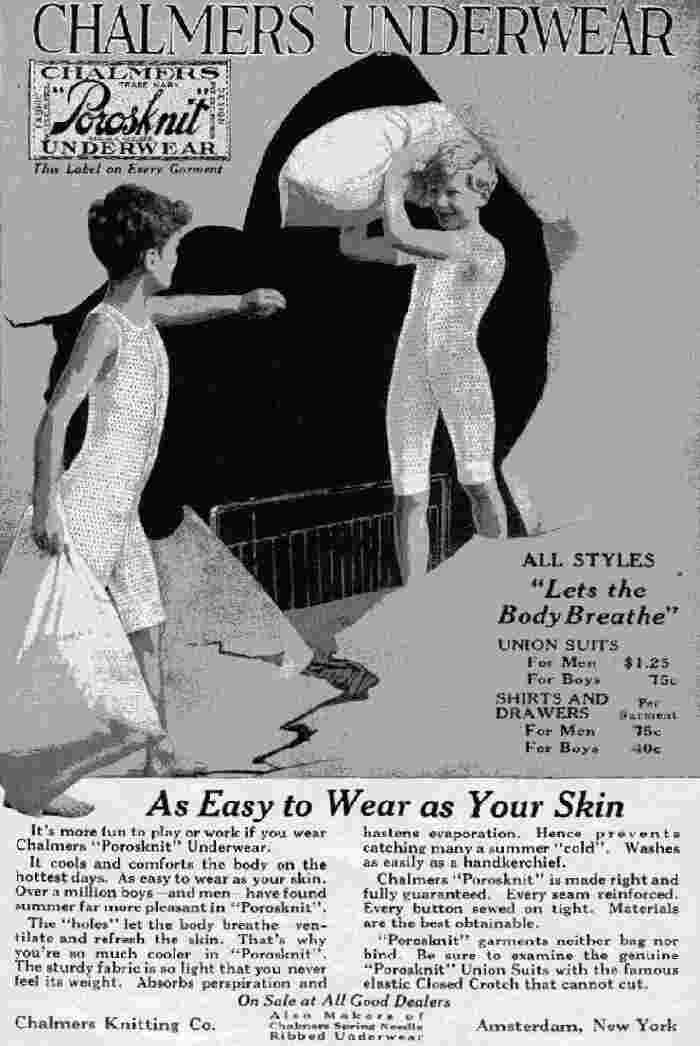
Figure 1.--We note an ad for Porsoknit union suits for boys that appeared in "Good Housekeeping Magazine" during 1917. This is a summer union suit for boys which also is made in adult sizes. Notice that the appeal is to the active side of boys.

The union suits here are ankle length. We also note knee-length styles of Porosknit union suits that were advertised in 1917. This ad comes from a different source--Good Housekeeping Magazine (May 1917, p. 86). The same fabric is used in these models but
they are knee-length suits instead of the ankle-length suit in our present illustration. The ad text is similar to the Literary Digest ad. The two different styles are a sleeveless knee-length model and a short-sleeved knee-length model.
We do not yet have much information on this company. The firm is the Chalmers Knitting Co. of Amsterdam, New York. They also made "Spring Needle Ribbed Underwear for Winter. We have little information on the company. All of the available information grom the 1910s.
This ad for Porosknit union suits comes from a different source--Good Housekeeping Magazine (May 1917, p. 86). Good Housekeeping first appeared May 2, 1885. It was one of of several popular women's magazines established suring the 1880s and 1890s. The magazine provided information about running a home and raising children. This the modern Good Housekeeping conytinues today. The Good Housekeeping seal of approval was developed to assure housewives of a product's value. Letters from readers were an important facet. The early magazine, however, also included a broad range
of literary offerings. Good Housekeeping was founded by journalist-businessman Clark W. Bryan in Holyoke, Massachusetts. The magazine moved to Springfield, but by 1911 the circulation was only 0.3 million. This changed when it was purchased by the William Randolph Hearst and moved to New York. The citculation
was soon in the millions of copies. Many well known writers have contributed to Good Housekeeping, including Somerset Maugham, Edwin Markham, Edna St.Vincent Millay, Frances Parkinson Keyes, and Evelyn Waugh.
Union suits were the main underwear style for both men and boys during the 1910s although separate undershirts and ankle-length drawers (which are also advertised here) were an alternative. The union suit is a close-fitting underwear garment. The term union refers to the fact that a union suit involves the combination of both a shirt and pants (drawers) in a one piece suit. The garment commonly included a drop seat. This term began to be used in the 1890s. The term union suit was commonly used for adults. The children's version was a waist suit or a waist-union suit. Women also wore union suits. So did girls. But they were associated mainly with men because more men than women wore them. With boys and girls, I'm not sure. I think waist union suits were equally popular for boys and girls because of the waist feature. Union suits for children were essentially combination suits. But union suits without the reinforcement straps were mainly a boy's garment.
This ad for Porsoknit union suits for boys appeared in the Literary Digest during 1917. This is a summer union suit for
boys which also is made in adult sizes. The union suits here are ankle length. We also note knee-length styles of Porosknit union suits that were advertised in 1917. The same fabric is used in these models but they are knee-length suits instead of the ankle-length suit in our present illustration. The ad text is similar to the Literary Digest ad. The two different styles are a sleeveless knee-length model and a short-sleeved knee-length model.
Notice that the appeal is to the active side of boys. The Porosknit brand features a cotton mesh fabric that stretches and absorbs perspiration. It was popular for summer wear when the weather was warm. Note that long-legged union suits and drawers were the standard wear for men and boys even in the hotter months. The boy in the ad seems to be about 8 or 10 years old. This union suit has short sleeves and sleeveless styles for summer. Styles with long sleeves were also available--especially in winter union suits. Nearly all boys' union suits of this period had buttons down the front from neck to crotch and a drop seat closed with three buttons.
The union suits here are knee-length styles of Porosknit union suits that were advertised in 1917. We also notice an ad for ankle-length suits. This ad comes from a different source--Litery Digest (1917). The same fabric is used in these models but there are different leg levels.
Navigate the Boys' Historical Clothing catalog/magazine pages:
[Return to the Main American mail order 1910s catalogs]
[Return to the Main American mail order 1917 page]
[Main photo/publishing page]
[Store catalogs]
[Fashion magazines]
Navigate the Boys' Historical Clothing Web Site:
[Introduction]
[Activities]
[Biographies]
[Chronology]
[Cloth and textiles]
[Clothing styles]
[Countries]
[Topics]
[Bibliographies]
[Contributions]
[FAQs]
[Glossaries]
[Satellite sites]
[Tools]
Navigate the Boys' Historical Clothing Web Site:
[Flat caps]
[Sailor hats]
[Buster Brown suits]
[Eton suits]
[Rompers]
[Tunics]
[Smocks]
[Knickers]
[Sailor suits]
[Long stockings]
[Underwear]
